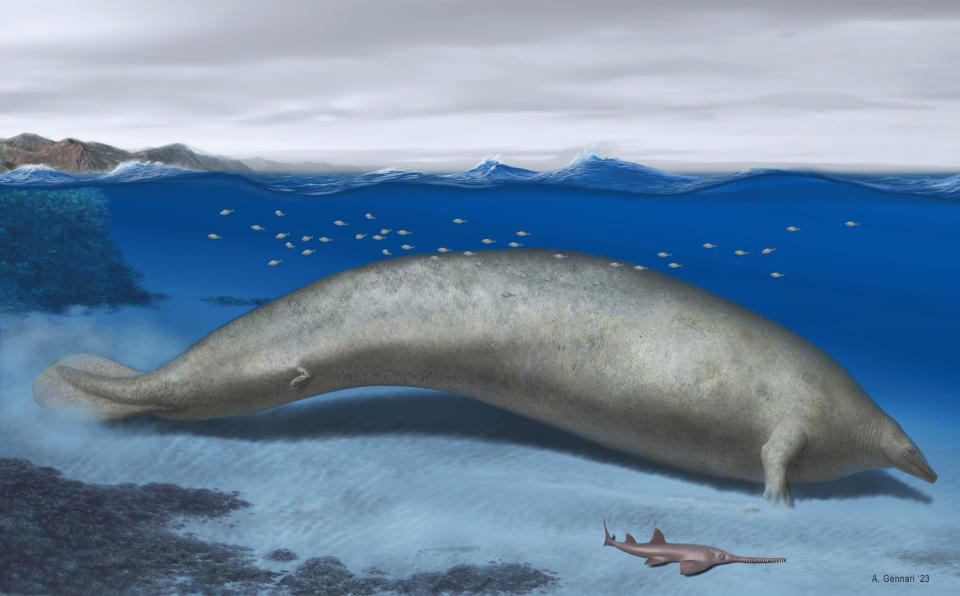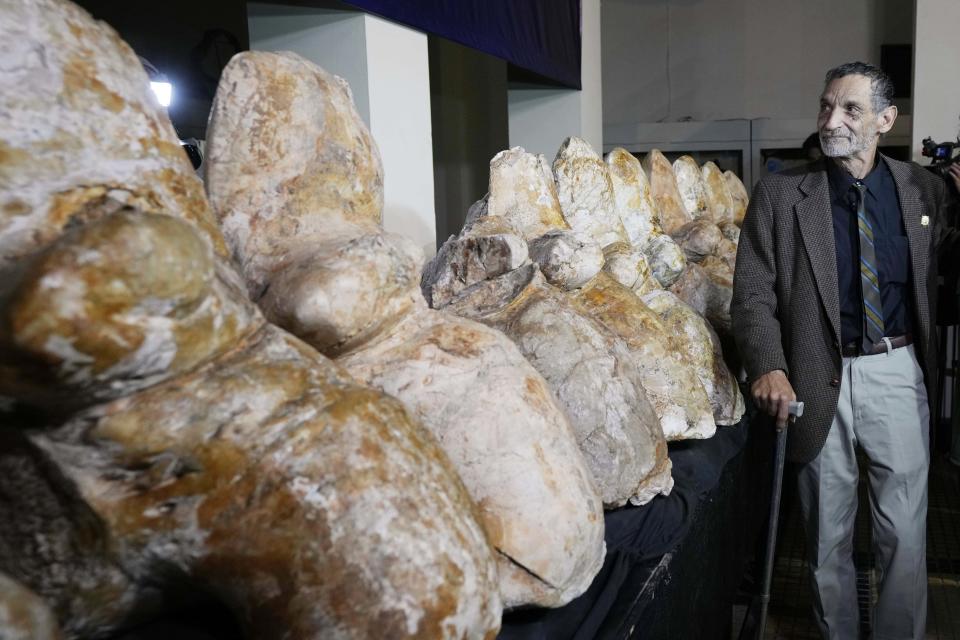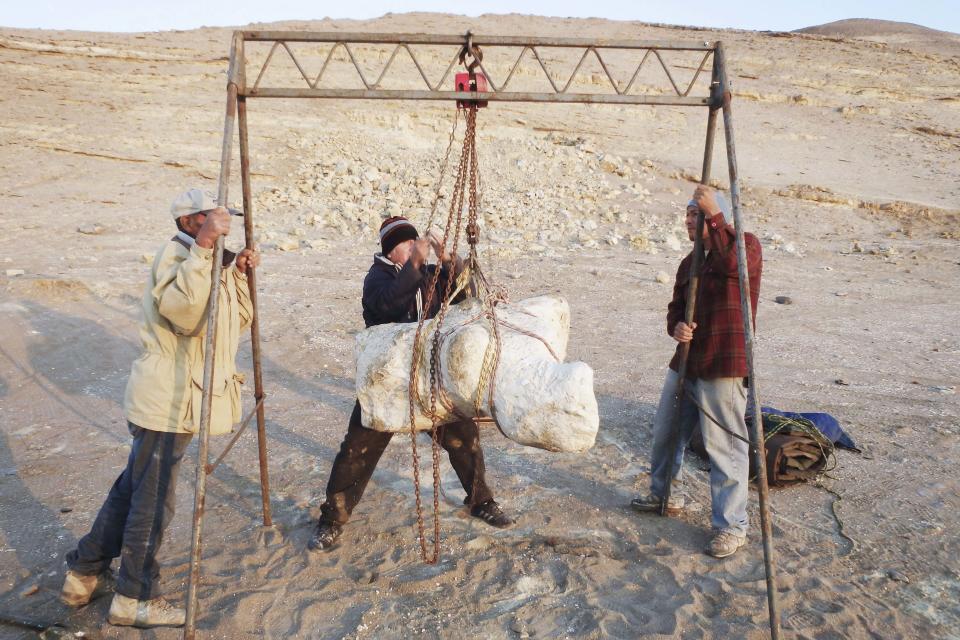The heaviest animal ever? Ancient whale found in desert
A giant whale that lived almost 40 million years ago is now thought to be the heaviest animal that has ever lived, scientists said Wednesday.
The Perucetus colossus — meaning the colossal whale from Peru —was even bigger than the current heavyweight champion, the blue whale, according to an article published in the journal “Nature.”
The newly revealed findings were based on fossils found in the Peruvian desert more than 10 years ago, but only just identified as a previously unknown species.

At 66 feet in length, the colossus isn’t the biggest or longest creature to have lived in the seas, since blue whales can grow to a gargantuan 100 feet long.
But the newly discovered sea mammal’s sheer bulk and its bone density means it was probably the heaviest and could have weighed between 94 tons (85 metric tons) and 375 tons (340 metric tons), the study said. The biggest blue whales ever observed weigh an estimated 200 tons (180 metric tons).
“The estimated skeletal mass of P. colossus exceeds that of any known mammal or aquatic vertebrate,” the journal article said, adding that this makes it “a contender for the title of heaviest animal on record.”
“The body mass of this ancient cetacean may have been ... almost twice that of the largest blue whales and more than three times that estimated for Argentinosaurus, one of the largest dinosaurs ever found,” said the study’s lead author Giovanni Bianucci, from the University of Pisa in Italy, in a press release.

An international team of scientists spent years digging in the Ica desert along the southern coast of Peru, an area that was once underwater and is famed for its paleontological discoveries.
Eventually they uncovered and extracted 13 vertebrae, four ribs and a hip bone. Each vertebrae would have weighed more than 220 pounds.
This posed quite a challenge for the research team, who struggled not only to lift the bone fossils but to fully analyze them via the usual methods.
Instead they used pioneering structured light scanning to make a three-dimensional model of them and drilled inside.
This allowed them to estimate the whale's size and weight despite having an incomplete skeleton.

Dating of volcanic ash at the site means the team could date the species to between 39.8 and 37.84 million years ago, in the Eocene epoch.
At that point other members of the cetacean family — which includes dolphins and whales — were still “abandoning the terrestrial lifestyle in favor of a marine one,” said Elisa Malinverno, a member of the research team.
The Perucetus colossus may have used its heavy skeleton as a ballast to roam around the ocean floor, feeding along the seabed like modern-day sea cows and some sharks, the study said.
“It’s just exciting to see such a giant animal that’s so different from anything we know,” said Hans Thewissen, a paleontologist at Northeast Ohio Medical University who had no role in the research, according to the Associated Press.
The Ica desert, one of the driest places on Earth, is also where scientists found the oldest known four-legged cetacean to reach the Pacific Ocean and the earliest ancestor of the modern baleen whales.
This article was originally published on NBCNews.com
